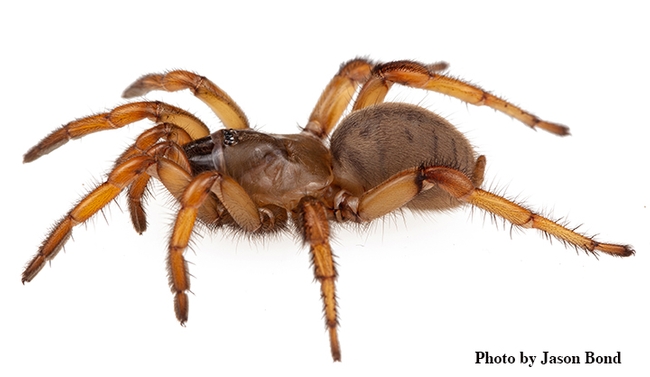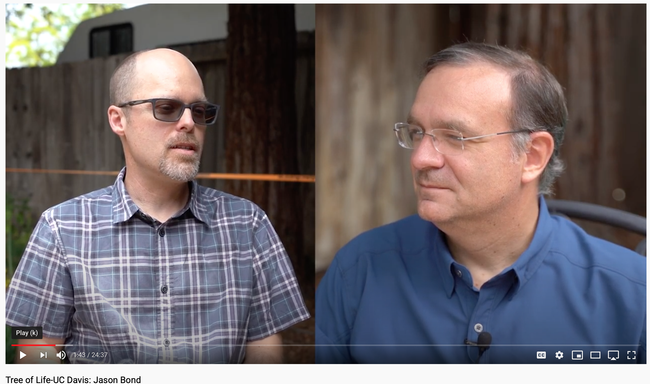- Author: Kathy Keatley Garvey

Some folks request a "spider alert" because they cringe in horror when they see an image of the eight-legged critter.
Even a little charmer like this one?
On Tuesday morning, July 7, we watched a crab spider claim a Mexican sunflower (Tithonia rotundifolia) in our pollinator garden in Vacaville, Calif.
UC Davis Professor Jason Bond, a noted spider authority and the Evert and Marion Schlinger Endowed Chair in Insect Systematics, Department of Entomology and Nematology, identified it as "a mature male, likely a Missumessus species (Thomisidae, crab spider). He's a bit lighter in coloration than I might expect--probably recently molted to maturity."
This little charmer peered at us, figured we were no threat to his well-being, future predatory plans or life goals, and struck a few "Arnold Schwarzenegger poses."
Then he vanished like yesterday's dreams, today's plans and tomorrow's promises. Haven't seen him since.
No doubt, however, he's still there, hanging out and targeting unsuspecting insects, including green bottle flies, aphids, tachinid flies, cabbage white butterflies, spotted cucumber beetles, and yes, an occasional bee.
A pollinator garden is a good place to "bee" when you are a predator.
Frankly, spiders are fascinating, they are beneficial, and they are our friends. We ought to appreciate them more.
In a recent Bug Squad blog, we asked Professor Bond for five good reasons to like spiders. He obliged:
- Spiders consume 400-800 million tons of prey, mostly insects, each year. Humans consume somewhere around 400 million tons of meat and fish each year.
- Spider silk is one of the strongest naturally occurring materials. Spider silk is stronger than steel, stronger and more stretchy than Kevlar; a pencil thick strand of spider silk could be used to stop a Boeing 747 in flight.
- Some spiders are incredibly fast--able to run up to 70 body lengths per second (10X faster than Usain Bolt).
- Athough nearly all 47,000-plus spider species have venom used to kill their insect prey, very few actually have venom that is harmful to humans.
- Some spiders are really good parents –wolf spider moms carry their young on their backs until they are ready to strike out on their own; female trapdoor spiders keep their broods safe inside their burrows often longer than one year, and some female jumping spiders even nurse their spiderlings with a protein rich substance comparable to milk.
“Spiders are an incredibly diverse group with more than 50,000 species described with probably another 200,000 remaining to yet be discovered,” Bond related. “They are quite ancient, with fossils dating back well over 300 million years and are known to be exclusively predatory.”
Stay tuned for an upcoming virtual open house on spiders hosted by the Bohart Museum of Entomology and featuring Professor Bond. It's free, family friendly, and questions are encouraged.
Meanwhile, the Bohart Museum will be hosting a Virtual Moth Night Open House from 1 to 2 p.m. on Saturday, July 25. Entomologist Jeff Smith, who curates the Lepidoptera (butterflies and moth) collection, will discuss and show moths and answer your questions. Tune in on the Bohart Facebook Live page. It also will be recorded for later viewing.
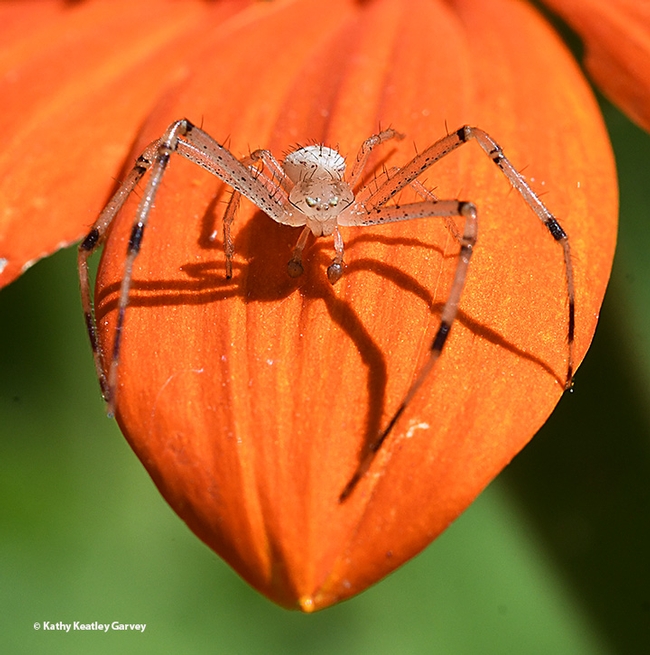
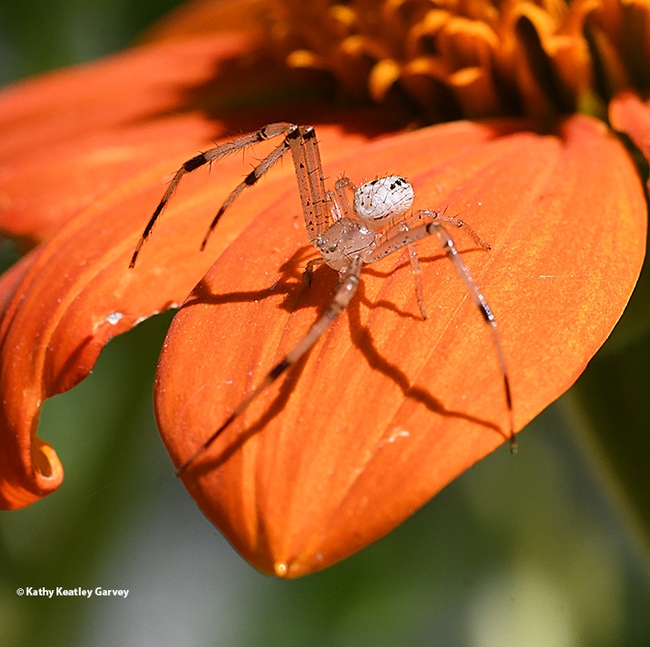
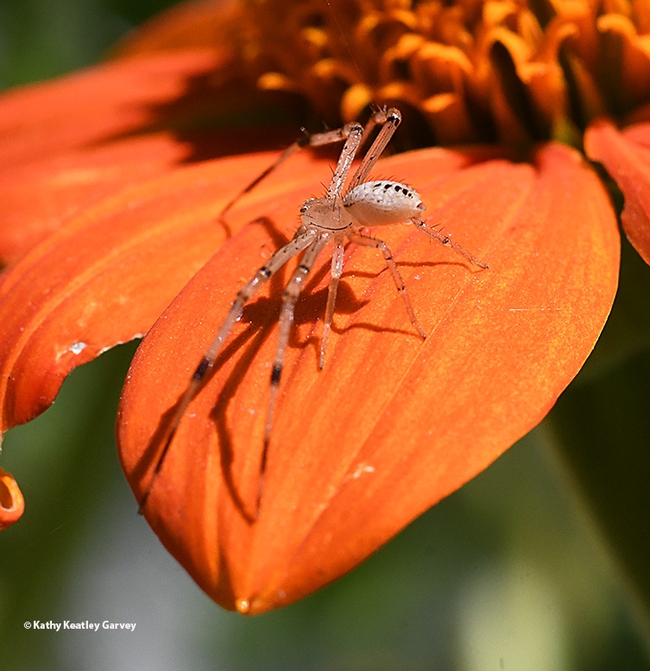

- Author: Kathy Keatley Garvey

He received more than 200 suggestions.
Bond, a noted spider authority and the Evert and Marion Schlinger Endowed Chair in Insect Systematics, UC Davis Department of Entomology and Nematology, accepted suggestions from mid-May until 5 p.m., June 1.
His colleague, Joel Ledford, assistant professor of teaching, UC Davis Department of Plant Biology--his research interests include spider systematics and biology education--interviewed Bond May 18 for his Tree of Life-UC Davis YouTube channel. See the episode online.
Bond discovered the new genus of trapdoor spiders on a sandy beach at Moss Landing State Park, Monterey County. Bond proposes to name the genus, Cryptocteniza, part of which means “hidden or secret.”
"There were a few distinct categories of name suggestions," said Bond, who received most through his email but some posted on the YouTube Channel. The categories:
- Native American groups and Native American terms
- Moss Landing derivative names – nouns in apposition associated with the type locality
- Names for celebrities or film characters – a modicum of Harry Potter suggestions as well
- Folks wanting me to name the spider after myself or some other association with the Bond name, related to No. 3
- Most recently names related to George Floyd or other associations with the Black Lives Matter movement.
A virtual open house on spiders, hosted by the Bohart Museum of Entomology, UC Davis, will be broadcast on FacebookLive sometime soon, said Tabatha Yang, education and outreach coordinator. It was initially scheduled for June 8 but postponed.
When it is rescheduled, Bond will discuss spiders, field questions about spiders, and list the top suggestions--perhaps several--for the species. When the final decision is made, the person who named it will be included in Bond's upcoming manuscript on the new genus. Ledford is a co-author.
Trapdoor spiders are so named because they construct their burrows with a corklike or wafer trap door made of soil, vegetation and silk.
Bond discovered the female spider in 1997 on the sandy beach, and figured at the time it might be a new genus. But despite repeated trips to the site, he could not find a male for 22 years. The male proved elusive until pitfall trap sampling in the fall of 2019.
“I have only one male specimen,” Bond told Ledford. He said he will be “relieved” when it is described and finds a home in the Bohart Museum of Entomology, located in Room 1124 of the Academic Surge Building on Crocker Lane. (It is temporarily closed due the coronavirus pandemic precautions.)
“This genus meets the criteria of an endangered living fossil,” Bond said, “and is consequently of grave conservation concern.” He believes the genus is found only in that area, but thinks it may be closely related to a genus found in New Mexico and Arizona. “It is quite plausible that this genus was once likely far more widespread across California and the American Southwest, with potentially greater past species diversity throughout its larger hypothetical ancestral range,” he said.
Of the genus name, Cryptocteniza, Bond says that the adjective “hidden or secret” is prefixed to Cteniza, the Greek feminine noun “comb.” The latter refers to the comb-like rastellum (row of stiff spines on the chelicera) common in taxa and formerly assigned to the spider family Ctenizidae (e.g., Eucteniza). The prefix refers to both the diminutive form of the rastellum and the seemingly “hidden in plain sight” nature of the genus, he says.
It is rare to find a genus in the field, the professor said. The usual place is in museum collections.
The trapdoor spider family Euctenizidae is comprised of some 76 described species in seven genera widely distributed throughout the United States, although a few species are known from Mexico.
Some of the suggestions posted on YouTube:
- Cryptocteniza 007 since it is hidden in plain sight and your name is Bond.
- Cryptoctenzia quartertine: a combination of “quarter” and “quarantine,” since it took you a quarter of a century to find a male specimen, and because of our current Covid experience!
- Cryptoceniza nutella (for the rich dark brown color)
- Cryptocteniza steinbeckii (for one of Monterey County's most famous residents, though apparently John Steinbeck already has a fish named after him)
- Cryptoceniza pairspinster (paired spinster since the male was found after so many years)
- Cryptoceniza Spidey McSpiderface
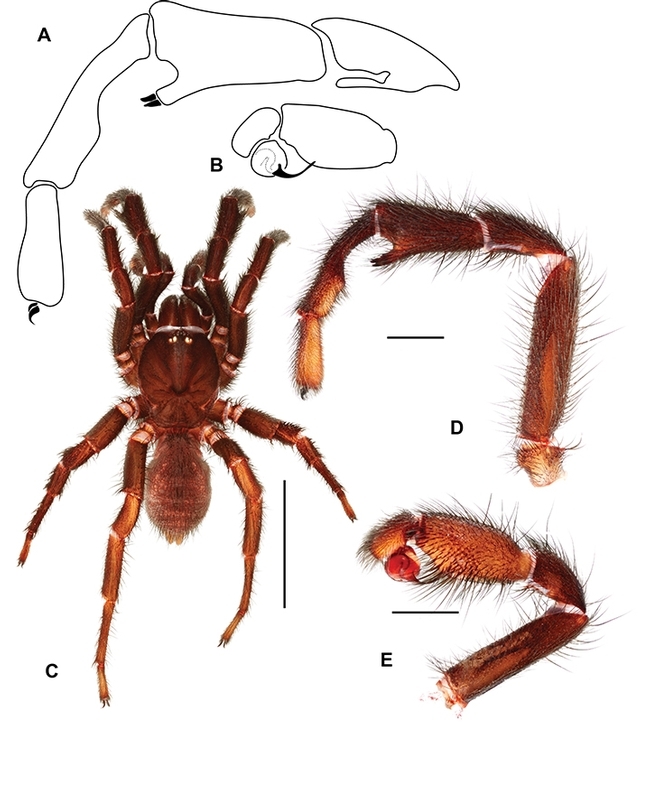

- Author: Kathy Keatley Garvey
UC Davis professor Jason Bond is seeking a species name for a new genus of trapdoor spiders he discovered on a sandy beach at Moss Landing State Park, Monterey County.
Bond proposes to name the genus, Cryptocteniza, part of which means “hidden or secret.” And the species name?
That's where you come in.
If your suggestion wins the competition, you will hold the bragging rights and be acknowledged in his upcoming manuscript on the new genus.
Bond, a noted spider authority and the Evert and Marion Schlinger Endowed Chair in Insect Systematics, UC Davis Department of Entomology and Nematology, is accepting suggestions until 5 p.m., June 1 at jbond@ucdavis.edu.
“It will stay that name forever,” said Bond, who related that spiders are often named for their physical characteristics, location or behavior--or for celebrities. He has named many a spider, singling out characters from Star Wars, as well as Depression era photographer Dorothea Lange, talk-show host Stephen Colbert, singer-songwriter Neil Young, and actress Angelina Jolie.
Bond and manuscript co-author Joel Ledford, assistant professor of teaching, UC Davis Department of Plant Biology, will select the winner. Ledford, whose research interests include spider systematics and biology education, interviewed Bond May 18 for his Tree of Life-UC Davis YouTube channel. It is online at https://www.youtube.com/watch?v=NV_eTablJMk.
“We don't want a public vote on the spider name,” in deference to the British polar research vessel that garnered a top public vote of “Boaty McBoatface” a few years ago, quipped Bond.
Trapdoor spiders are so named because they construct their burrows with a corklike or wafer trap door made of soil, vegetation and silk.
Bond discovered the female spider in 1997 on the sandy beach, and figured at the time it might be a new genus. But despite repeated trips to the site, he could not find a male for 22 years. The male proved elusive until pitfall trap sampling in the fall of 2019.
“I have only one male specimen,” Bond told Ledford. He said he will be “relieved” when it is described and finds a home in the Bohart Museum of Entomology, UC Davis.
“This genus meets the criteria of an endangered living fossil,” Bond said, “and is consequently of grave conservation concern.”
Bond believes the genus is found only in that area, but thinks it may be closely related to a genus found in New Mexico and Arizona. “It is quite plausible that this genus was once likely far more widespread across California and the American Southwest, with potentially greater past species diversity throughout its larger hypothetical ancestral range,” he said.
Of the genus name, Cryptocteniza, Bond says that the adjective “hidden or secret” is prefixed to Cteniza, the Greek feminine noun “comb.” The latter refers to the comb-like rastellum (row of stiff spines on the chelicera) common in taxa and formerly assigned to the spider family Ctenizidae (e.g., Eucteniza). The prefix refers to both the diminutive form of the rastellum and the seemingly “hidden in plain sight” nature of the genus, he says.
Bond credited Vera Opatova, a postdoctoral fellow in his lab, with helping to formulate the genus name.
It is rare to find a genus in the field, the professor said. The usual place is in museum collections.
The trapdoor spider family Euctenizidae is comprised of some 76 described species in seven genera widely distributed throughout the United States, although a few species are known from Mexico.
(Please send name suggestions to jbond@ucdavis.edu)
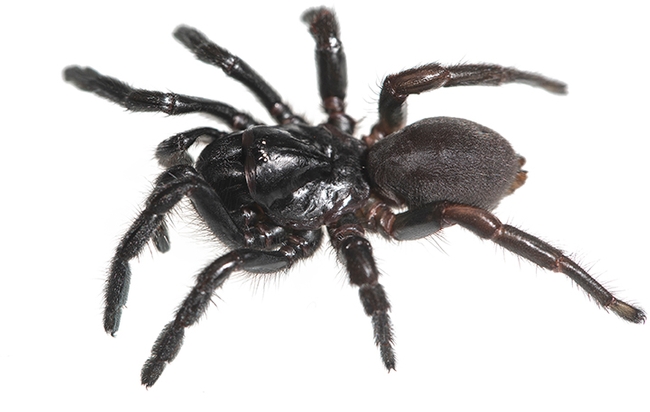
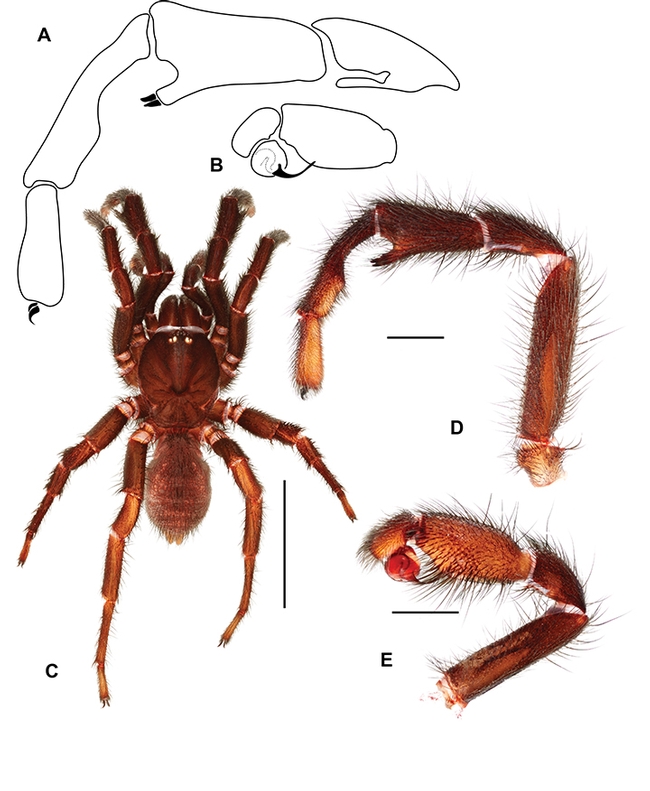

- Author: Kathy Keatley Garvey
The UC Davis Department of Entomology and Nematology's seminar on Wednesday, Feb. 26 will feature six “Faculty Flash Talks” on topics ranging from honey bees to tsetse flies to digger bees to trapdoor spiders to fruit flies.
The seminar, set from 4:10 to 5 p.m. in 122 Briggs Hall, will include Joanna Chiu, Jason Bond, Geoffrey Attardo, Rachel Vannette, Julia Fine, and Arathi Seshadri.
Associate professor Joanna Chiu, vice chair of the department, will present “results from a project in which we study the mechanisms by which insects sense environmental changes (temperature and photoperiod) to regulate their seasonal physiology. Our lab has identified a protein that can track seasonal changes in temperature and photoperiod to promote winter physiology. Without this protein, insects don't know winter is coming!”
Her laboratory research interests include molecular genetics of animal behavior, Circadian rhythm biology, and posttranslational regulation of proteins.
Capsule information:
Jason Bond, Schlinger Chair in Insect Systematics, is a global expert on spiders. His research interests include systematics, taxonomy, and evolution of terrestrial arthropods with an emphasis on arachnids and myriapods. "We employ molecular, morphological, and ecological approaches to study questions related to evolutionary diversification at multiple hierarchical levels (populations – higher taxa)," he says. (See recent grant.)
Geoffrey Attardo, a medical entomologist/geneticist, focuses his research on insect disease vectors, insect reproduction, vector/parasite interactions, reproductive physiology, male seminal secretions, symbiosis, lactation, nutrition, lipid metabolism, transcriptional regulation, comparative genomics, transcriptomics, proteomics and metabolomics. His research on tsetse flies was recently featured on KQED's Deep Look (see news story on Deep Look). (See news story on landmark research.)
Rachel Vannette, community ecologist and assistant professor who coordinates the department's seminars, says: "All plants are colonized by microorganisms that influence plant traits and interactions with other species, including insects that consume or pollinate plants. I am interested in the basic and applied aspects of microbial contributions to the interaction between plants and insects. I also use these systems to answer basic ecological questions, such as what mechanisms influence plant biodiversity and trait evolution." (See recent research)
Arathi Seshadri and Julia Fine, who recently joined the USDA-ARS lab on Bee Biology Road, UC Davis, aim to improve honey bee survival and beekeeping sustainability in California and nationwide. They collaborate with federal, university, non-governmental and industry partners. (See news story on opening of the facility.)
Seshadri, a pollination biologist with expertise in honey bee behavior and plant reproductive strategies, is working with beekeepers and farmer stakeholders to develop projects aimed at finding solutions to the ongoing pollination challenges. Also trained as an evolutionary biologist, she has applied principles of plant-pollinator mutualism, specifically the impact of phytochemicals in pollen and nectar on honey bee health and colony performance. Her contributions to pollinator conservation include enhancing the sustainability of all pollinators, including native bees on farms and urban areas. She also has expertise in agroecosystem-based approaches and citizen science programs to promote pollinator diversity and abundance.
Fine, an entomologist with expertise in insect toxicology, honey bee physiology, reproduction and development, focuses her research on identifying how stressors impact honey bee behavior, health and fecundity. She uses both established and novel laboratory techniques. Her previous projects involved investigating how agrochemical and viral stressors interact to affect the development and survival of honey bee brood and how nutritional stress affects honey bee queen fecundity. In engaging with beekeepers and growers, Fine is researching how realistic biotic and abiotic stressors affect honey bee reproduction, longevity and pollination services, and she is identifying techniques and strategies to overcome these effects.
The seminar is open to all interested persons. For more information, contact Vannette at rlvannette@ucdavis.edu.
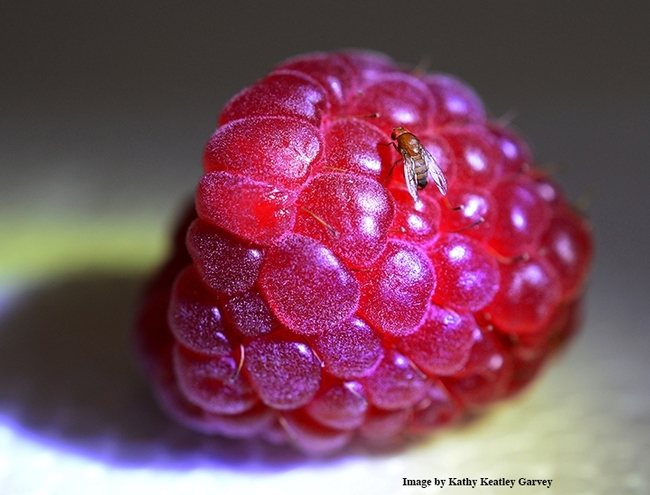
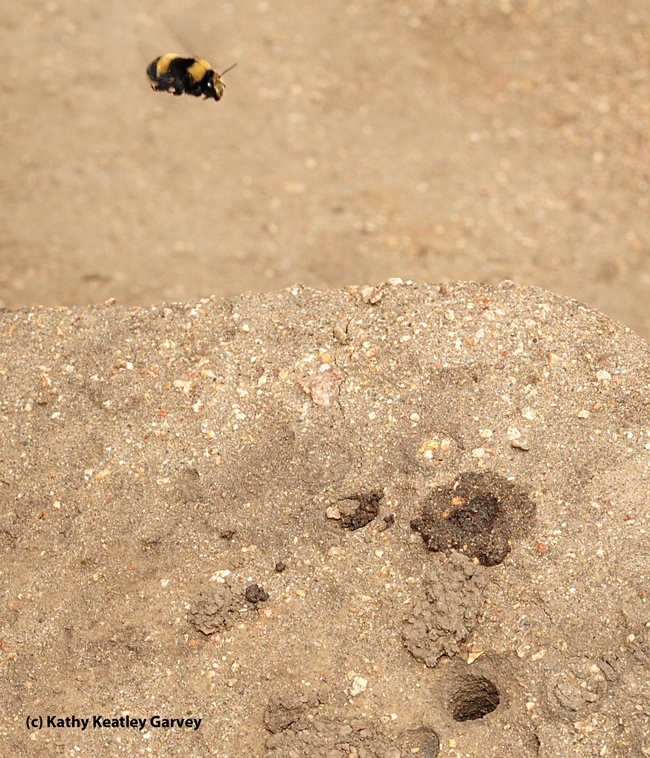
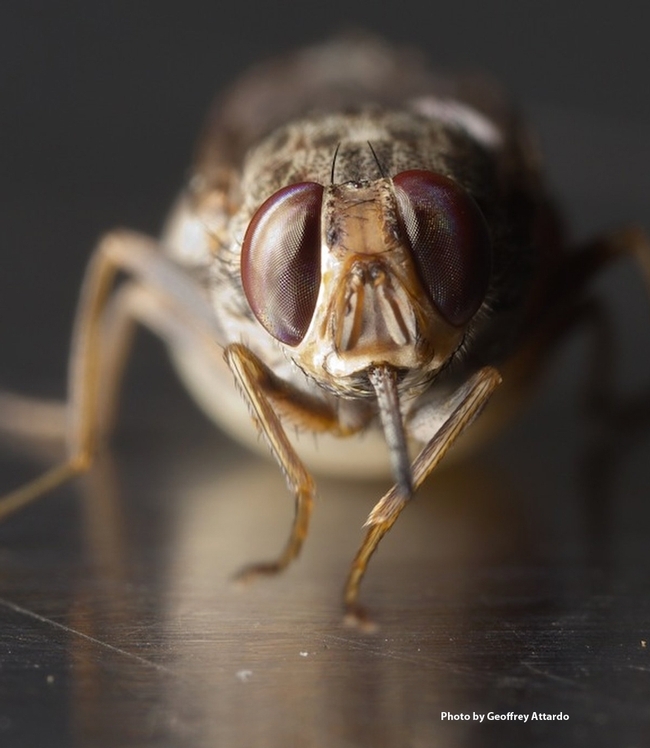
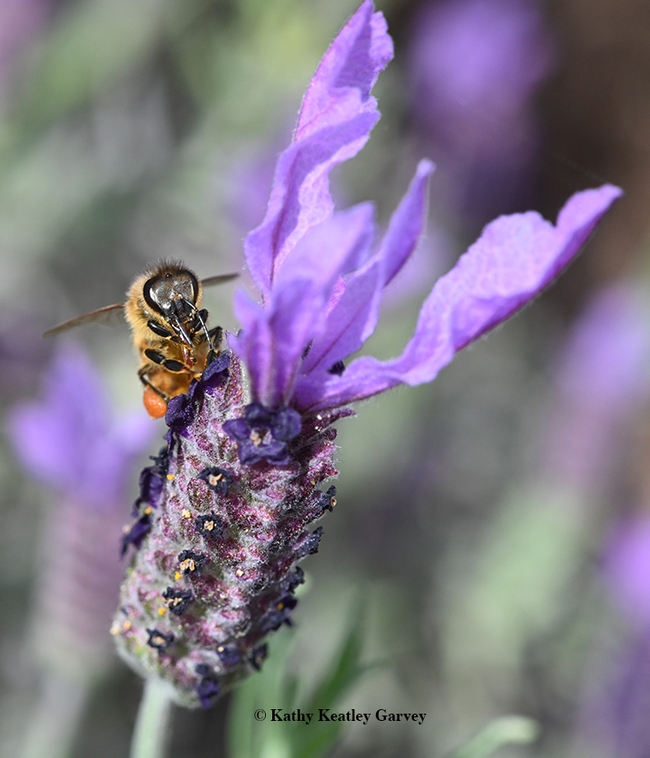
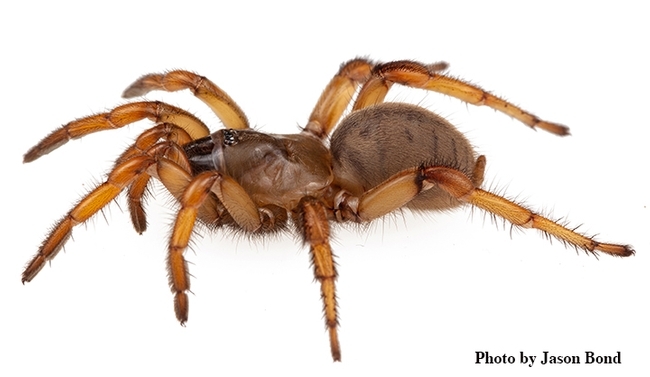
- Author: Kathy Keatley Garvey

First, the grant:
Jason Bond, professor and the Schlinger Chair in Insect Systematics, UC Davis Department of Entomology and Nematology, has received a 4-year, $1.4 million National Science Foundation grant to study trapdoor spiders in the California Floristic Province.
“The idea is to look at the genomic diversity of trapdoor spider populations across the California landscape and identify new species and hotspots of diversity,” said Bond, principal investigator of the collaborative award, shared with Marshal Hedin, professor of biology at San Diego State University (SDSU).
“From a research perspective, this is pretty exciting but it also includes a really nice educational component working with Fran Keller at Folsom Lake College (a UC Davis alumnus),” Bond said. “We have REU (Research Experiences for Undergraduates) funding for students who will be transferring to UC Davis.”
Also working on the grant is co-PI James Starrett, project scientist in the Bond lab.
Trapdoor spiders construct their burrows with a corklike or wafer trap door made of soil, vegetation and silk. They belong to a number of related families placed in the order Araneae, including Euctenizidae and Halonoproctidae.
The researchers also will be using “crowdsourced” data from iNaturalist, involving public sightings of spiders.
The California Floristic Province is a floristic province with a Mediterranean-type climate on the Pacific Coast. In addition to its remarkable spider diversity, this biodiversity hotspot is known for its giant sequoias and coastal redwoods.
“One of the first products from the project will be the description of a new trapdoor spider genus and species from Moss Landing State Beach,” Bond said. Plans call for the public to suggest candidate names for the new species, with the Bohart Museum of Entomology selecting the winner.
The grant is titled “Collaborative Research: Phylogenomics, Spatial Phylogenetics and Conservation Prioritization in Trapdoor Spiders (and Kin) of the California Floristic Province.”
The abstract: “Using a combination of original fieldwork, newly developed analytical methods for genetically identifying species and their evolutionary and geographic relationships, this research project will focus on trapdoor spiders and their relatives as an exemplary group for biodiversity knowledge and conservation in the California Floristic Province (CA-FP). Long-term surveys will be conducted at multiple geographic locations that include most major CA-FP habitat types. At these sites, the presence of spider species and the numbers of individuals in each will be measured to provide a statistical baseline for future monitoring efforts. New large DNA datasets, based on analysis of thousands of genes, will be generated by analysis of the genomes of these species.”
“New methods will be applied to this data to identify species boundaries, and formal taxonomic descriptions will be made for all new species,” according to the abstract. “The new information about these new species and their genetic relationships will be used to assess patterns of biodiversity in this spider group across the complex geography of the CA-FP. Statistical comparisons of the geographic patterns of spider species distribution will be made to CA-FP plants and vertebrates, and these results will be used to determine whether biodiversity hotspots coincide with federal, state, and locally protected areas.”
“This project will train students and other researchers in several techniques of field biology research, producing and analyzing new data from genomes, using cutting edge methods. This research will encourage participation and train a select group of community college students from underrepresented groups who plan to transfer to Science, Technology, Engineering, and Math (STEM) programs in four-year colleges.”
Bond and colleagues recently published research in the journal Systematic Biology that recognizes eight new spider families—five elevations in rank and three brand new family level rank names, along with one new subfamily. This is in addition to other new families that Bond and Hedin proposed last year. Postdoctoral researcher Vera Opatova of the Bond lab (she recently left for a position in Prague), is the first author on the Systematic Biology paper, "Phylogenetic Systematics and Evolution of the Spider Infraorder Mygalomorphae Using Genomic Scale Data," and Bond is the senior author.
Hedin is the principal investigator of a continuing grant, “Collaborative Research: Phylogenomics, Spatial Phylogenetics and Conservation Prioritization in Trapdoor Spiders (and Kin) of the California Floristic Province,” with co-principal investigator and Jeet Sukemaran, SDSU assistant professor who specializes in computational evolutionary biology.
